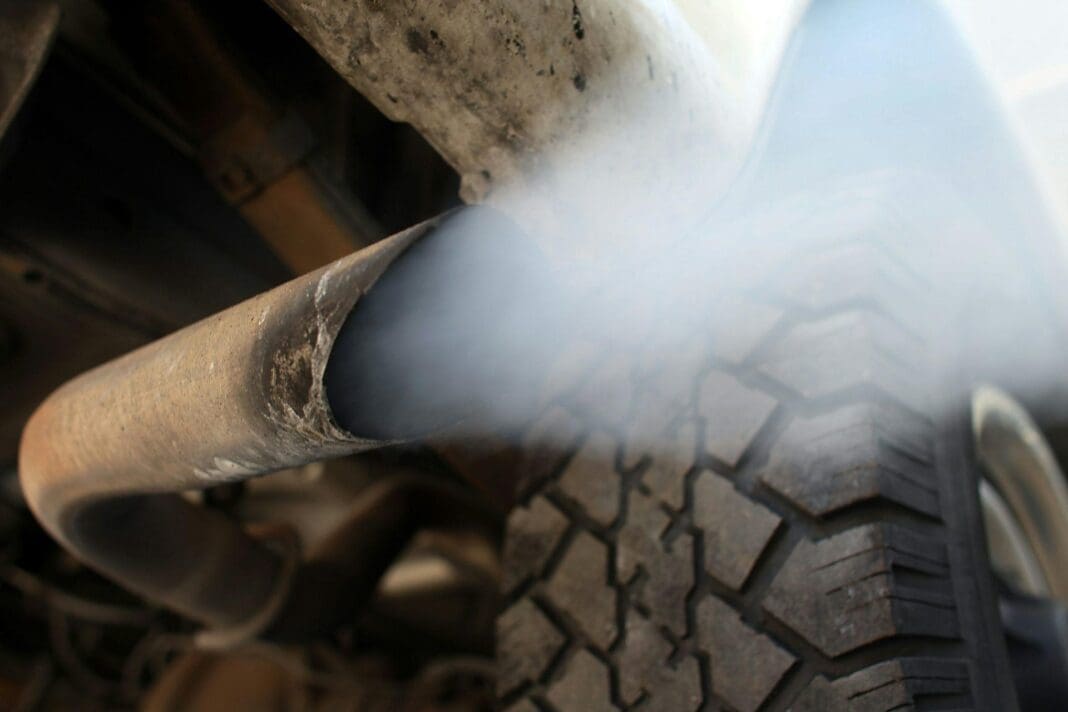Long-term high ultrafine particle concentrations in New York state neighborhoods are linked to higher numbers of deaths. That is the key finding of our new research, published in the Journal of Hazardous Materials.
Our study shows that high levels of ultrafine particles in the atmosphere over long periods of time are significantly associated with increased non-accidental deaths, particularly from cardiovascular and respiratory diseases.
Ultrafine particles are aerosols less than 0.1 micrometers, or 100 nanometers, in diameter — about one-thousandth the width of a human hair. Due to their tiny size, they can be easily inhaled into the distal branches of lungs, quickly absorbed into the bloodstream and even pass through organ barriers.
We also found that certain underserved populations, including Hispanics, non-Hispanic Black people, children under 5, older adults and non-New York City residents, are more susceptible to the adverse effects of ultrafine particles. The disparities our study uncovered underscore the necessity for public health agencies to focus on and protect high-risk populations.
We quantified the long-term health impacts of exposure to these pollutants by combining mortality data from vital records in New York state and using a model that tracks how particles move and change through the air.
Air pollution is now ranked the second-leading risk factor for death, accounting for about 8.1 million deaths globally and about 600,000 deaths in the United States in 2021.
Most air pollution standards and regulations have been focused on larger particulate matter, such as PM2.5 – which includes organic compounds and metal particulates – and PM10, a category that includes dust, pollen and mold.
In comparison, ultrafine particles are typically much greater in number and have a much larger surface area-to-volume ratio, allowing them to carry substantial amounts of hazardous metals and organic compounds. Furthermore, because of their smaller size, ultrafine particles can follow the air flow and get deep into the lungs when inhaled. These unique characteristics make ultrafine particles particularly dangerous, leading to a range of adverse health problems.
Despite this understanding, ultrafine particles remain largely unregulated, while larger particulates are regulated under the National Ambient Air Quality Standards.
Due to their unique characteristics, ultrafine particles require additional, tailored attention.
Ultrafine particles stem from both natural sources and human activity – primarily from combustion processes such as motor vehicles, power plants, wood burning and wildfires. A large share of ultrafine particles is created by chemical reactions in the atmosphere involving acidic gases from fossil fuel burning and ammonia from farming and residential wastes.
As cities continue to expand and urban populations grow, people’s exposure to these harmful particles is likely to increase. Both PM2.5 and ultrafine particles come from similar sources and can also form through chemical reactions in the atmosphere, but their trends diverge.
PM2.5 mass has been declining in many places, including New York, thanks to air quality regulations. However, recent research suggests that ultrafine particle numbers are not going down and have been increasing since 2017.
There are currently no large-scale monitoring sites in the U.S. dedicated to tracking ultrafine particles in the environment. This limits the ability of researchers like us to comprehend the extent of ultrafine particle exposure and its impact on public health.
What’s more, the exact biological mechanisms through which ultrafine particles cause harm are not yet fully understood. Increasing research evidence suggests that ultrafine particles can affect heart function, causing hardening of arteries, lung inflammation and systemic inflammation.
There have been few prior studies looking at death rates related to ultrafine particle exposure by demographics and seasonality. By understanding which groups are most vulnerable to ultrafine particle exposure, interventions can be more effectively tailored to lower the risks and protect those who are disproportionately affected. Our study, which is funded by the New York State Energy Research and Development Authority, helps fill in these critical knowledge gaps.
The Research Brief is a short take on interesting academic work.
This article is republished from The Conversation, a nonprofit, independent news organization bringing you facts and trustworthy analysis to help you make sense of our complex world. It was written by: Shao Lin, University at Albany, State University of New York; Arshad Arjunan Nair, University at Albany, State University of New York; Fangqun Yu, University at Albany, State University of New York, and Q
Read more: Air pollution harms the brain and mental health, too – a large-scale analysis documents effects on brain regions associated with emotions Combatting an invisible killer: New WHO air pollution guidelines recommend sharply lower limits Air pollution kills thousands of Americans every year – here’s a low-cost strategy to reduce the toll
The authors do not work for, consult, own shares in or receive funding from any company or organization that would benefit from this article, and have disclosed no relevant affiliations beyond their academic appointment.








